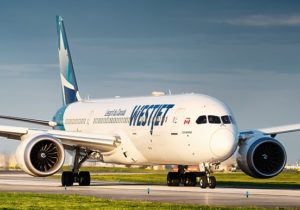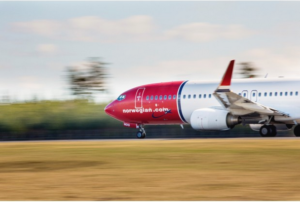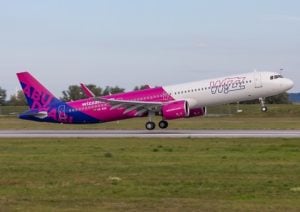Friday October 24, 2025
SalamAir has signed a ten-year memorandum of understanding (MoU) with Mach Aerospace International (MAI) to set up an aircraft wheels and brakes maintenance centre in Oman. Under the deal, SalamAir will provide MAI with a full set of specialised wheels and bra...
Read More »
Friday October 24, 2025
American Airlines Group has announced its financial results for the third quarter of 2025, reporting record revenue of US$13.7 billion. Despite the strong performance, the airline posted a GAAP net loss of US$114 million, equivalent to US$(0.17) per diluted sh...
Read More »
Friday October 24, 2025
Onex Partners and WestJet have finalised the sale of minority equity stakes in the Canadian carrier to Delta Air Lines, Korean Air, and Air France-KLM. The sale marks a new chapter in WestJet’s international partnerships while keeping control with Onex Partn...
Read More »
Friday October 24, 2025
Hanwha Aerospace (Hanwha) has signed a new agreement with GE Aerospace to purchase more T700 and F404 engine kits. These engines will power Korea Aerospace Industries’ Surion helicopter and the T-50, TA-50, and FA-50 Golden Eagle jet trainers and light attac...
Read More »
Friday October 24, 2025
Airbus’ 2025 Cargo Global Market Forecast (GMF) projects the worldwide fleet of dedicated freighter aircraft will grow to 3,420 over the next 20 years, a 45% increase. This total will include 815 existing freighters and 2,605 additional ones. Of the 2,605 ne...
Read More »
Friday October 24, 2025
Aircraft Propeller Service (APS) has completed its first overhaul of Collins Aerospace 568F propeller blades at its new MRO facility in Malaysia. It marks the first time this propeller type has been serviced within the region. Until now, all Collins 568F prope...
Read More »
Thursday October 23, 2025
Airbus, Leonardo and Thales have signed a memorandum of understanding to merge their space activities into a single company. By joining forces, the three giants aim to bolster Europe’s strategic autonomy in space. This vital sector supports telecommunication...
Read More »
Thursday October 23, 2025
Jamco Corporation (Jamco), a Bain Capital portfolio company and Japan’s top manufacturer of aircraft cabin interiors, has announced the acquisition of Aerospace Technologies Group (ATG) by Bain Capital. The global investment firm manages assets worth around ...
Read More »
Thursday October 23, 2025
Ashland Place Finance (Ashland Place) has completed its third and fourth aircraft financing facilities with affiliates of Fortress Investment Group and GOAL Aircraft Leasing. The deals involve the sale and leaseback of two new Embraer E195-E2 jets, delivered d...
Read More »
Thursday October 23, 2025
Lockheed Martin has reported a robust third quarter for 2025, with sales reaching US$18.6 billion, up from US$17.1 billion a year earlier. Net earnings remained steady at US$1.6 billion, or US$6.95 per share, slightly higher than the US$6.80 per share recorded...
Read More »
Thursday October 23, 2025
Embraer has begun construction on a new MRO facility for commercial jets at Perot Field Alliance Airport in Fort Worth. The ground-breaking ceremony gathered local leaders, Embraer executives, and partner representatives to celebrate this major step forward. T...
Read More »
Thursday October 23, 2025
At a ceremony in Washington, Bell Textron signed key agreements with Ukraine’s Ministry of Economy, Ecology, and Agriculture, and UkraineInvest. The deal aims to explore industrial cooperation as part of a possible purchase of AH-1Z Viper and UH-1Y Venom hel...
Read More »
Wednesday October 22, 2025
Elysian, a pioneer in next-generation electric aircraft, has signed a collaboration agreement with regional aircraft lessor TrueNoord. The deal, announced during the European Regions Airline Association (ERA) General Assembly in Estoril, supports Elysian’s f...
Read More »
Wednesday October 22, 2025
For the third quarter 2025, the Norwegian Group has posted a profit before tax (EBT) of NOK 2,891 million and an operating profit (EBIT) of NOK 3,071 million. The period also marked key milestones. The company paid its first-ever dividend in August and confirm...
Read More »
Wednesday October 22, 2025
Aviation Capital Group LLC (ACG) has delivered three new Airbus A321neo aircraft to Wizz Air. These aircraft are powered by advanced Pratt & Whitney GTF engines, known for their fuel efficiency and lower emissions. They mark the tenth, eleventh and twelfth...
Read More »
Wednesday October 22, 2025
The U.S. Army has advanced its heavy-lift modernisation plans with an order for nine Boeing CH-47F Block II Chinook helicopters. The two new contracts, worth US$461 million, bring the total number of Block II aircraft on order to 18. The latest awards, coverin...
Read More »
Wednesday October 22, 2025
STS Line Maintenance (STS), part of STS Aviation Group, has opened a new satellite station in Vero Beach, Florida (VRB). Operations will begin on December 1, with JetBlue Airways confirmed as the launch customer. Mark Smith, President of STS Aviation Group, sa...
Read More »
Wednesday October 22, 2025
A major deal has been agreed to support a multi-million-pound expansion of aircraft maintenance operations at Teesside International Airport. The move will create hundreds of skilled engineering jobs and boost the region’s growing aviation sector. Willis Avi...
Read More »
Wednesday October 22, 2025
BCT Aviation Maintenance, based at East Midlands Airport (EMA), has made a six-figure investment in new hangar tools and airside vehicles. The move prepares the company for a busy winter maintenance season. From October to December, BCT’s hangar will handle ...
Read More »
Tuesday October 21, 2025
Korean Air and Archer Aviation (Archer) have signed an agreement to bring Archer’s Midnight eVTOL aircraft to Korea. The rollout will begin with government use and later expand to other sectors. As part of the deal, Korean Air plans to buy up to 100 Midnight...
Read More »































